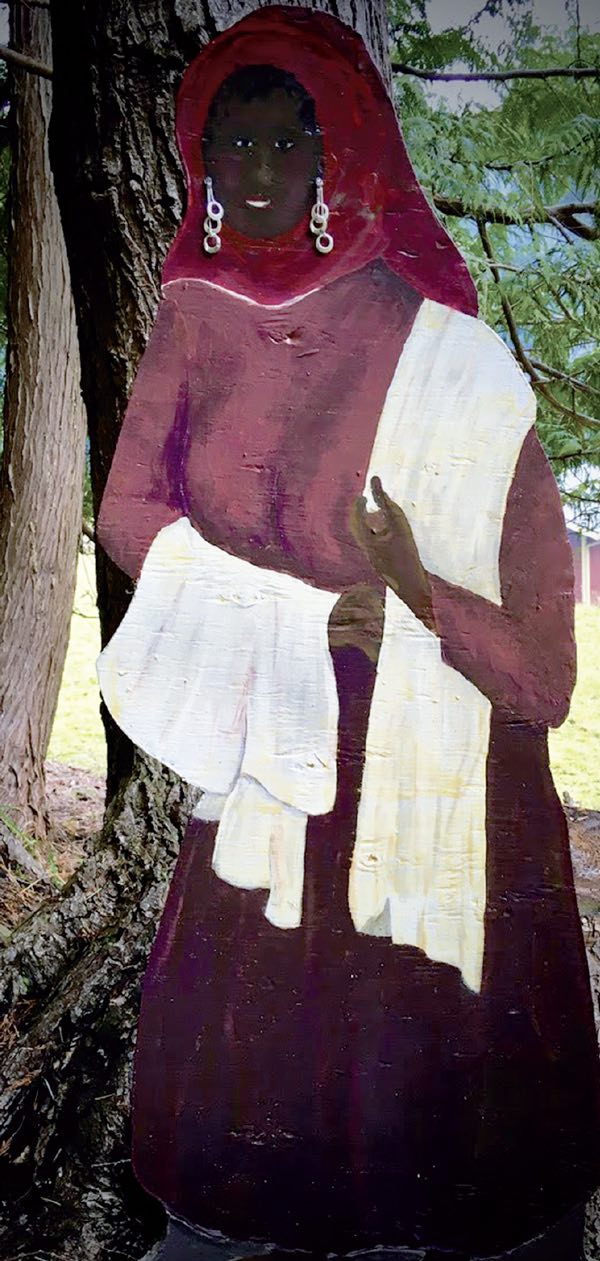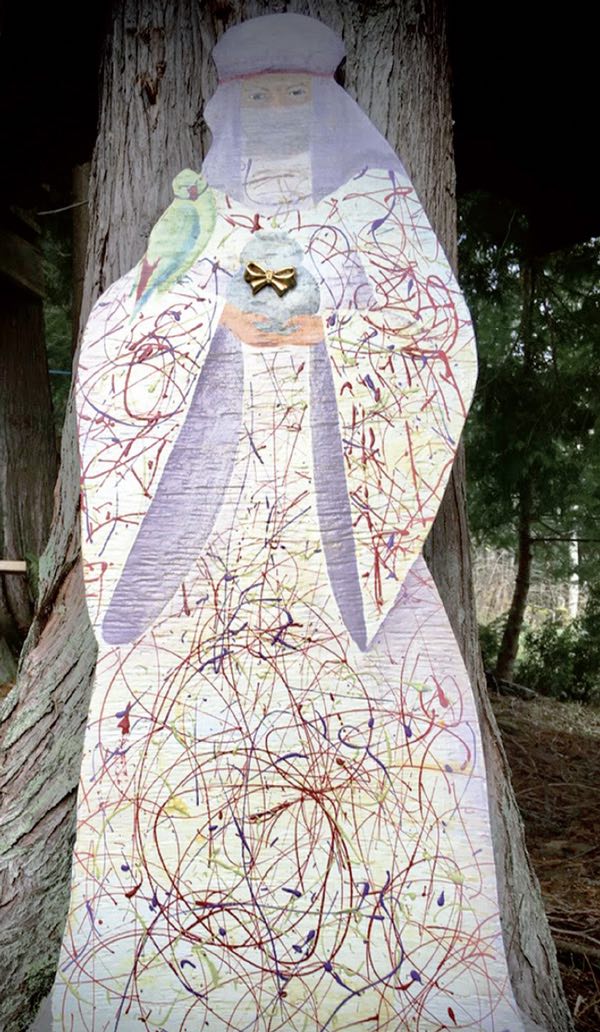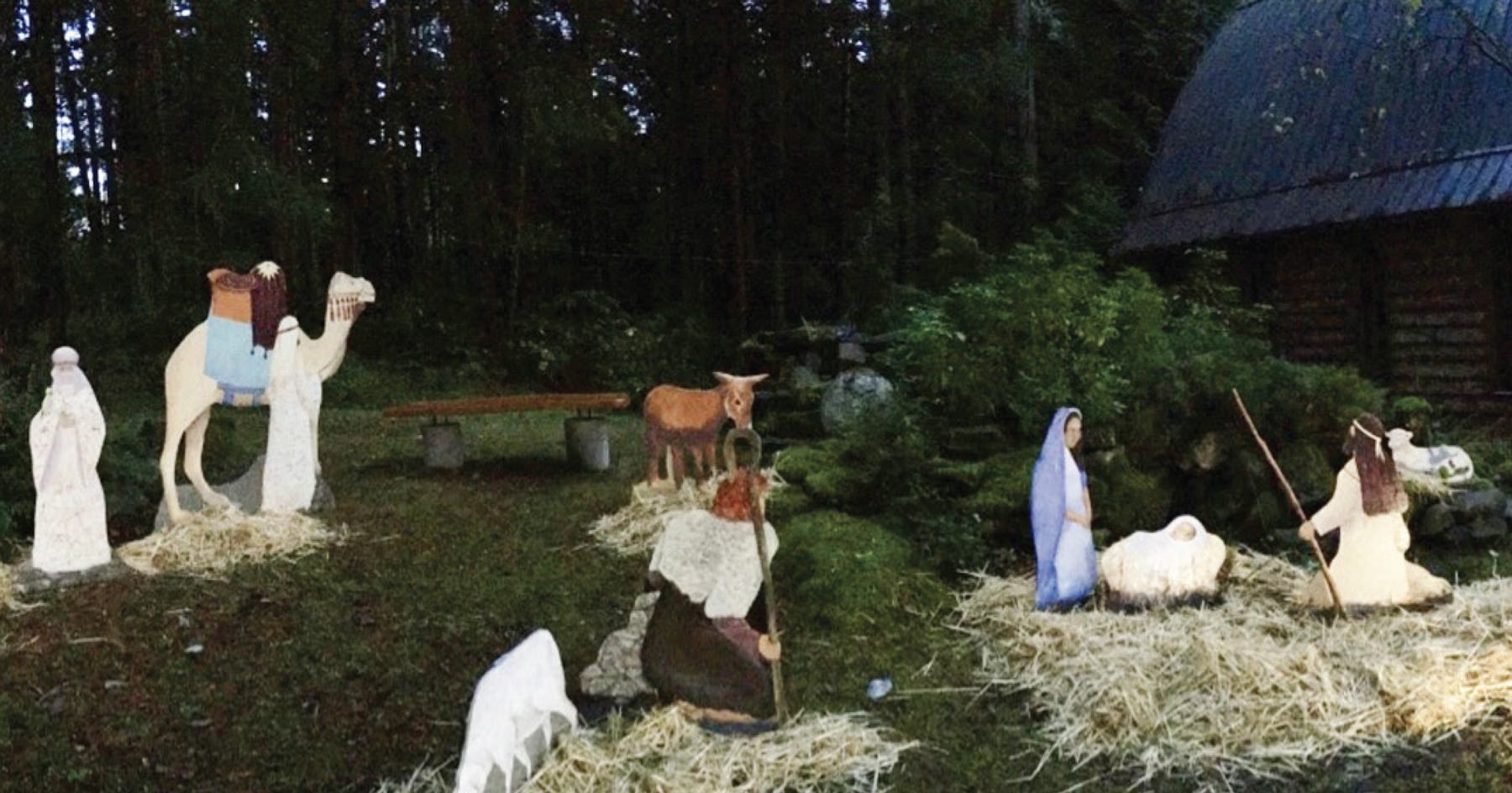St. Christopher, Saturna Island, replaces its outdoor nativity
St. Christopher, Saturna Island, is small in size but rich in sacred imagination. Christmas 2020 was approaching, and the island was in COVID-19 lockdown. Like most churches during the pandemic, the lights were out and the doors were locked, and late autumn leaves and pine needles had hidden the walkway. Added to that, our more than 40-year-old outdoor nativity set was beyond repair. Still, Christmas was coming.

We decided to create a new nativity from the old, working individually from our places of isolation. One person gathered paint samples while another collected leftover colours from the recycling depot. The old nativity pieces were almost good enough to trace, so a third person drew new pieces that were then cut and given a base coat of paint. Hay and lights for the surrounding were in wait. We had to imagine the rest. Trusting ourselves and the story, we leaned on sacred imagination and from this beautiful and courageous story of the birth of Jesus, a new story began to emerge.
As a story painter, I felt the heaviness of a tradition that portrayed a young woman, Mary, birthing a baby in less than desirable circumstances — a stable, surrounded by men: Joseph, shepherds, wisemen, an innkeeper, not to mention all the animals. A bit much! At least one sheep could be an expectant ewe.
My search continued. It became reasonable to think that an innkeeper could be a woman who, even when there was no room in the inn, would not turn away a young mother ready to give birth. We aren’t told who provided the swaddling clothes, but if they had not come with Mary and Joseph, we could imagine that a sympathetic female innkeeper knew exactly where to find swaddling clothes for a new baby.
We know Bethlehem of Judea to be the traditional home of King David, whose son Solomon was a king who forged political alliances across the Middle East and North Africa. Needless to say, Black women could be considered part of the story. So, this nativity was set to imagine a Black woman as the capable innkeeper in Bethlehem. There may have been no room at the inn, but this woman would make do with whatever she could find to help a young woman in labour.

And who are the wise men? Were they wise? Were they men? Does it matter whether we call them wise men or magi? Many significant supporting persons in scripture are nameless. I wanted more for such an amazing story as the birth of Immanuel, God with us. After much thought and reading, I came to the conclusion that the magi could quite possibly have been Zoroastrian priests with their worship of one supreme God, Wise Lord. The symbolic fire of their rituals and prayers is kept alight with sandalwood and frankincense.
Zoroastrians believed in personal free will and an equality between men and women in all endeavors — philosophy, religion, medicine, war and astrology. Zoroastrianism was known throughout the Middle East as a wisdom religion. Again, it seemed possible that Christian tradition named these astrologers and visitors of the infant Christ for their wisdom tradition, and not necessarily their gender. So, I imagined the possibility that these visitors from the East, spoken of in the gospel narrative, could have included women as well.
Finally, the story began to feel whole again — the infant Christ surrounded and worshipped by all of creation. It is the hope and prayer of St. Christopher, Saturna Island, that all who visit the nativity scene will see and know that they have a place in the humble gospel story of an infant born in a stable and laid in a manger. The paintings are as imperfect as the painters but reflect a desire to see beyond the tradition to the truth within the story that God so loved the world.




